
Lee, Pascal. "N~1: Alone in the Milky Way – Kalamazoo Astronomical Society". YouTube. Archived from the original on 15 March 2021.
The Fermi paradox is the discrepancy between the lack of conclusive evidence of advanced extraterrestrial life and the apparently high likelihood of its existence. As a 2015 article put it, "If life is so easy, someone from somewhere must have come calling by now."
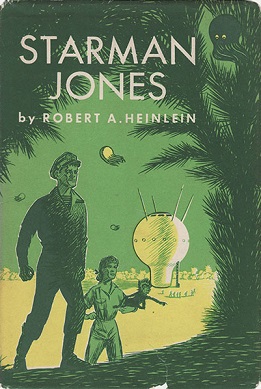
Starman Jones, a 1953 science-fiction novel by Robert A. Heinlein, features a farm boy who wants to go to the stars. Charles Scribner's Sons published the book as part of the Heinlein juveniles series.
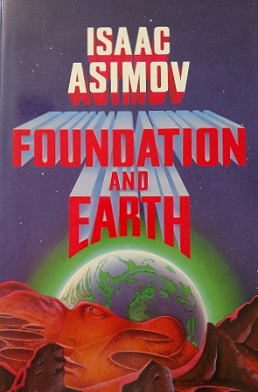
Foundation and Earth is a science fiction novel by American writer Isaac Asimov, the fifth novel of the Foundation series and chronologically the last in the series. It was published in 1986, four years after the first sequel to the Foundation trilogy, which is titled Foundation's Edge.

Orphans of the Sky is a science fiction novel by American writer Robert A. Heinlein, consisting of two parts: "Universe" and its sequel, "Common Sense". The two novellas were first published together in book form in 1963. "Universe" was also published separately in 1951 as a 10¢ Dell paperback. The work presents one of the earliest fictional depictions of a generation ship.

Arthur Philip Dent is a fictional character and the hapless protagonist of the comic science fiction series The Hitchhiker's Guide to the Galaxy by Douglas Adams.
The concept of self-replicating spacecraft, as envisioned by mathematician John von Neumann, has been described by futurists including physicist Michio Kaku and discussed across a wide breadth of hard science fiction novels and stories. Self-replicating probes are sometimes referred to as von Neumann probes. Self-replicating spacecraft would in some ways either mimic or echo the features of living organisms or viruses.
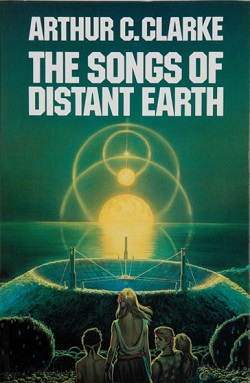
The Songs of Distant Earth is a 1986 science fiction novel by British writer Arthur C. Clarke, based upon his 1958 short story of the same title. He stated that it was his favourite of all his novels. Clarke also wrote a short step outline with the same title, published in Omni magazine and anthologized in The Sentinel in 1983.

The Skylark of Space is a science fiction novel by American writer Edward E. "Doc" Smith, written between 1915 and 1921 while Smith was working on his doctorate. Though the original idea for the novel was Smith's, he co-wrote the first part of the novel with Lee Hawkins Garby, the wife of his college classmate and later neighbor Carl Garby. The novel starts as an edisonade, but turns into a space travel adventure when the characters go into deep space. The Skylark of Space is considered to be one of the earliest novels of interstellar travel and the first example of space opera. Originally serialized in 1928 in the magazine Amazing Stories, it was first published in book form in 1946 by the Buffalo Book Co. The novel was followed by three sequels, beginning with Skylark Three.

The Sands of Mars is a science fiction novel by English writer Arthur C. Clarke. While he was already popular as a short story writer and as a magazine contributor, The Sands of Mars was also a prelude to Clarke's becoming one of the world's foremost writers of science fiction novels. The story was published in 1951, before humans had achieved space flight. It is set principally on the planet Mars, which has been settled by humans and is used essentially as a research establishment. The story setting is that Mars has been surveyed but not fully explored on the ground. The Sands of Mars was Clarke's first published novel.

Lucky Starr and the Rings of Saturn is the final novel in the Lucky Starr series, six juvenile science fiction novels by Isaac Asimov that originally appeared under the pseudonym Paul French. The novel was first published by Doubleday & Company in 1958. It was the last novel to be published by Asimov until his 1966 novelization of Fantastic Voyage, and his last original novel until 1973's The Gods Themselves. Lucky Starr and the Rings of Saturn is the only novel by Asimov set in the Saturnian system.
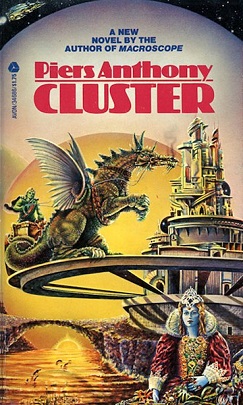
Cluster is a series of science fiction novels by Piers Anthony. Anthony originally conceived of and wrote the series as a trilogy but later added two additional volumes.
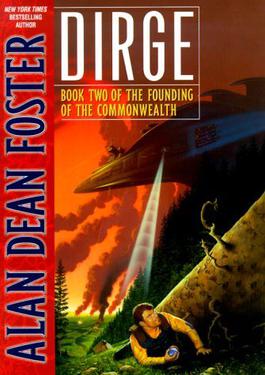
Dirge (2000) is a science fiction novel by American writer Alan Dean Foster. The full title is sometimes shown as Dirge: Book Two of The Founding of the Commonwealth.

"Green Patches" is a science fiction short story by American writer Isaac Asimov. It was first published in the November 1950 issue of Galaxy Science Fiction under the title "Misbegotten Missionary", and reprinted under that title in the 1952 anthology Tomorrow, the Stars. It was retitled "Green Patches" in Asimov's 1969 collection Nightfall and Other Stories.

The Body Snatchers is a science fiction novel by American writer Jack Finney, originally serialized in Collier's magazine in November–December 1954 and published in book form the following year.

Across the Sea of Suns is a 1984 hard science fiction novel by American writer Gregory Benford. It is the second novel in his Galactic Center Saga, and continues to follow the scientist Nigel Walmsley, who encountered an extraterrestrial machine in the previous book, In the Ocean of Night, aboard an expeditionary spacecraft, searching for life. Eventually Nigel discovers evidence of the major conflict in the galaxy.
The planetary systems of stars other than the Sun and the Solar System are a staple element in many works of the science fiction genre.

The Stars Are Ours! is a 1954 science fiction novel by American writer Andre Norton. It describes the first interstellar voyage, undertaken to escape the tyranny that rules the Earth. Norton wrote a sequel, Star Born, which was published in 1957.
The Foundation universe is the future history of humanity's colonisation of the galaxy, spanning nearly 25,000 years, created through the gradual fusion of the Robot, Galactic Empire, and Foundation book series written by American author Isaac Asimov.

Planet of Light is a science fiction novel by American writer Raymond F. Jones, first published in 1953 by the John C. Winston Co. as part of its 35-book set of juvenile novels. Written as a sequel to Son of the Stars, the story follows Ron Barron and his family as they are taken to a planet in the Great Galaxy of Andromeda to participate in a meeting of an intergalactic analogue of the United Nations. They face the question if Earth is ready to join an intergalactic society.















